Archaeology & History
A Dining Room With Stunning Wall Murals Unearthed in Pompeii
The murals feature characters and scenes inspired by the Trojan War.
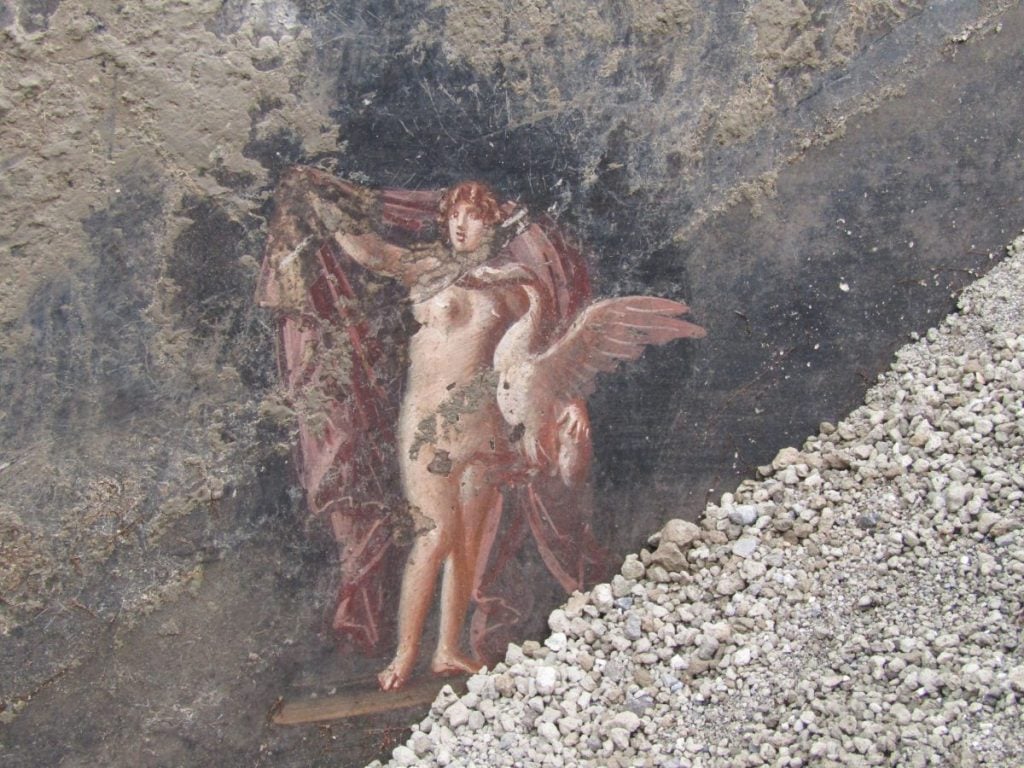
A banqueting room has been excavated in Pompeii, revealing wall murals inspired by the Trojan War. The find is in block 10 of Regio IX of the Pompeii archaeological site, which was rediscovered in the 16th century and has been excavated since the 18th century. The site was opened to the public as an open-air museum in the late 19th century, and became a UNESCO World Heritage Site in 1997. Pompeii’s official website announced the discovery on April 11.
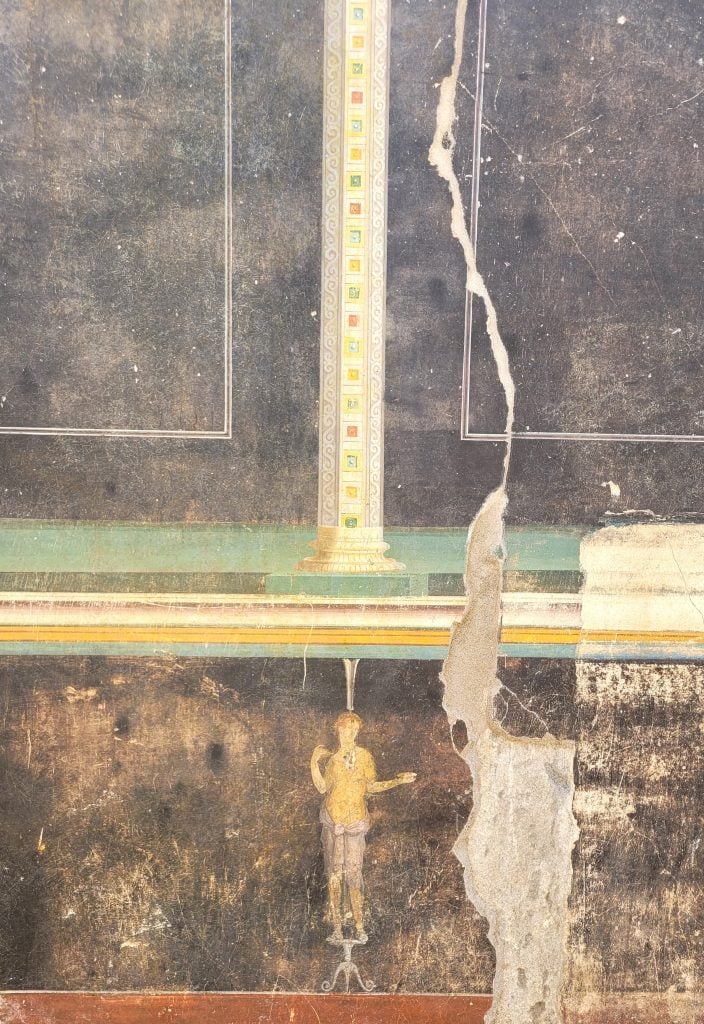
Mural on a dining room excavated on the Pompeii archaeological site. Photo: Pompeii Archaeological Park.
The walls of the large—49 feet by 20 foot—dining room are painted black, decorated with characters and scenes from the Trojan War. Gabriel Zuchtriegel, the director of the Pompeii Archaeological Park, explained that the walls “were painted black to prevent the smoke from the oil lamps being seen on the walls.”
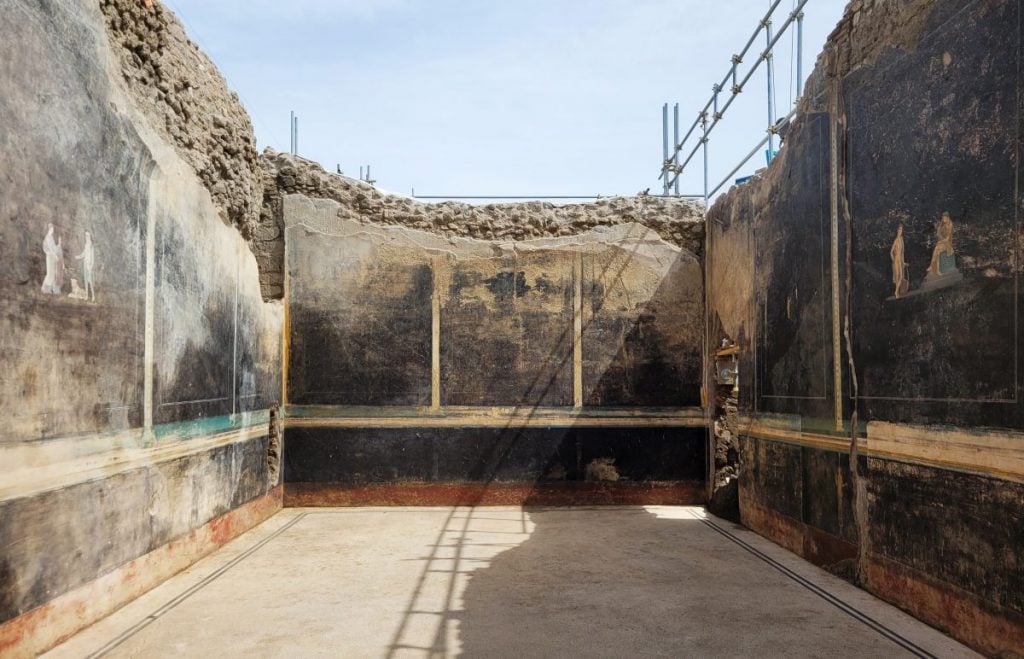
Mural on a dining room excavated on the Pompeii archaeological site. Photo: Pompeii Archaeological Park.
The Trojan War has long been the subject of debate, regarding whether or not the conflict truly happened, on what scale, and where. It was most famously explored in Homer’s Iliad, in which the conflict was said to have begun due to the King of Priam’s son, Paris making a decision in a beauty contest between the three goddesses Hera, Athena, and Aphrodite. As reward for choosing Aphrodite as the fairest goddess, Paris was given the love of Helen, who was at that time already married to the King of Sparta. According to the myth, the Trojan War was the consequence of King Menelaus’s desire to retrieve his wife from Paris.
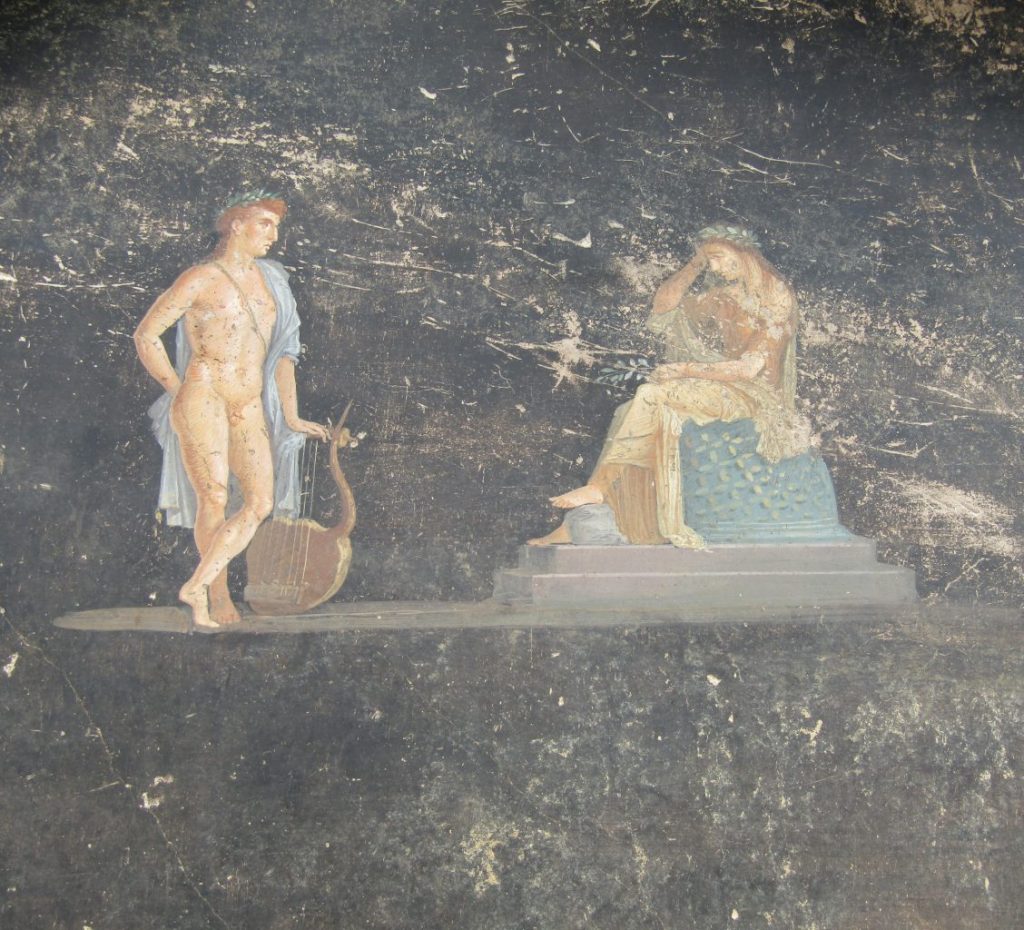
Mural on a dining room excavated on the Pompeii archaeological site. Photo: Pompeii Archaeological Park.
The murals are completed in the Third Style, a style which used flat planes of color, popular during the early 1st century C.E. The park’s statement said that the “dominant theme” of the murals “seems to be that of heroism,” given the pairs of heroes and deities in the designs.
Murals in banqueting rooms would have provided dinner guests with conversation starters as well as setting the tone for the festivities. The inconsistent lamplight would have “had the effect of making the images appear to move, especially after a few glasses of good Campanian wine,” said Zuchtriegel.
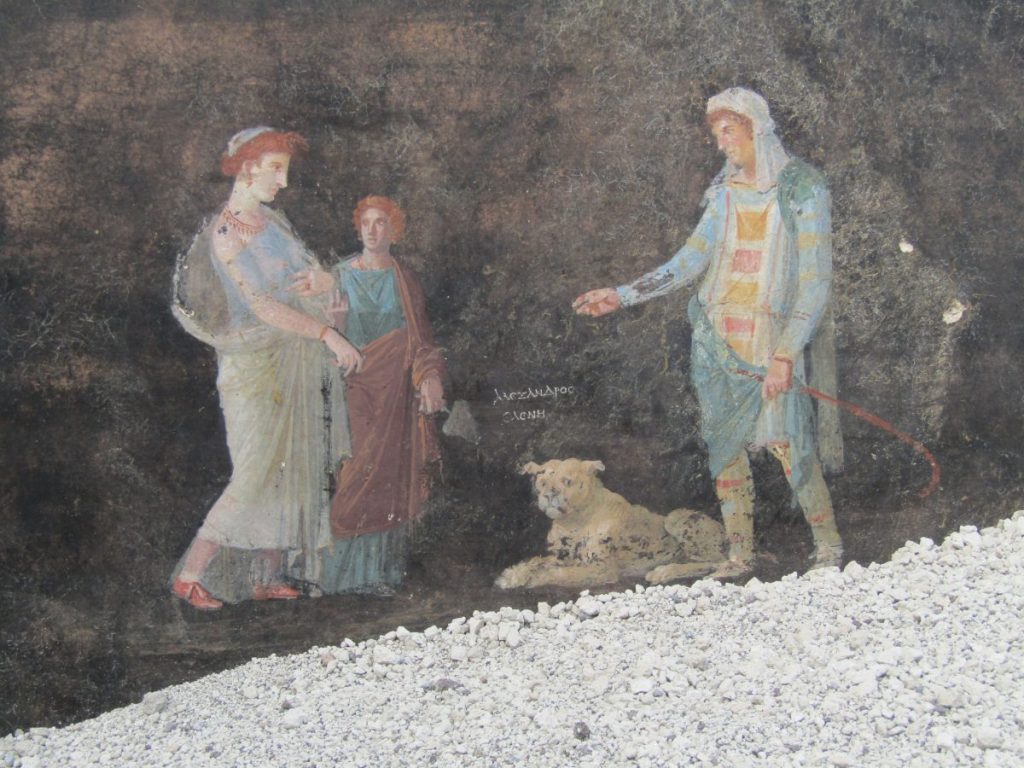
Mural on a dining room excavated on the Pompeii archaeological site. Photo: Pompeii Archaeological Park.
Figures in the dining room murals include Helen and Paris—the lovers at the heart of the conflict. The pair are identified by a Greek inscription between them, which uses Paris’ alternative name “Alexandros.” Also included is Cassandra, Paris’ ssister who was cursed by the gods to be able to tell the future but never to be believed.
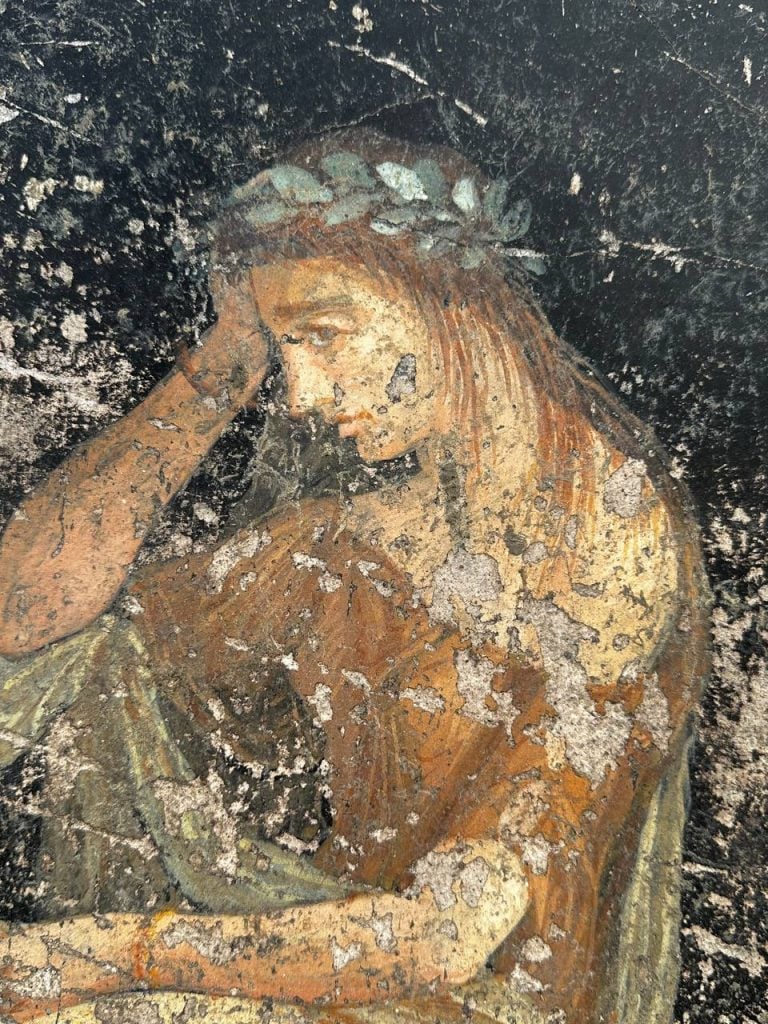
Mural on a dining room excavated on the Pompeii archaeological site. Photo: Pompeii Archaeological Park.
Zuchtriegel said: “The mythological couples provided ideas for conversations about the past and life, only seemingly of a merely romantic nature. In reality, they refer to the relationship between the individual and fate: Cassandra who can see the future but no one believes her, Apollo who sides with the Trojans against the Greek invaders, but being a god, cannot ensure victory, Helen and Paris who, despite their politically incorrect love affair, are the cause of the war, or perhaps merely a pretext. Who knows?”
Also found beneath the arches of a staircase in the dining room were two pairs of gladiators drawn in charcoal, and an “an enormous stylized phallus.”





